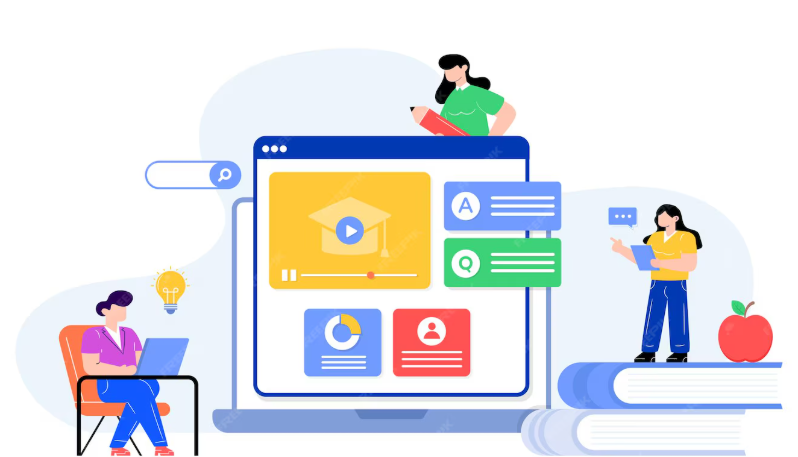The user experience is a key element in the world of online learning. The design of your online learning environment will determine not only how well your course is received by students but also how successful it is in carrying out its purpose.
The user experience is crucial in the world of online learning. The layout of your online learning environment will determine how well your course goes and how happy your students are. Students are put first in user-centered design, which guarantees that the course website's layout, content, and functionality are shaped by their requirements, preferences, and experiences.
The Essence of User-Centered Design
The wants and expectations of the users, in this case, are given top priority in the user-centered design process. It entails comprehending their objectives, actions, and difficulties in order to create a learning environment that perfectly matches their expectations.
Benefits of User-Centered Design in Online Learning
Enhanced Engagement
You can encourage greater engagement and motivation among users or mentees, which will enhance learning outcomes, by customizing the course website to their tastes.
Improved Usability
An intuitive design eliminates difficulties and improves the user experience overall by making navigation and content access simple.
Accessibility and Inclusivity
By using user-centered design, you can make sure that everyone, including students with impairments, can access the course website and foster an inclusive learning environment.
Higher Satisfaction
Students are more likely to be happy with their learning experience when they find the course website to be simple to use and navigate.
Key Principles of User-Centered Design
User Research
Recognize your target audience before anything else. Use usability tests, interviews, and surveys to learn more about people's preferences and expectations.
Usability Testing
Test your course website frequently with actual students to spot any usability problems and improve the design.
Clear Information Architecture
Make it simple for pupils to locate the information they need by organizing the content in a logical and systematic way.
Responsive Design
For a seamless user experience, make sure your course website is responsive and can adjust to various screen sizes and devices.
Inclusive Design
Give emphasis to accessibility by including keyboard navigation choices, captioning for videos, and alternative text for photos.
Feedback Mechanisms
To consistently improve the user experience, encourage students to offer feedback and take the suggestions they make into consideration.
Personalization in User-Centered Design
User-centered design includes a potent element called personalization. Engagement and understanding can be greatly improved by adapting the material, assessments, and resources to specific learning preferences and levels of development.
User-Centered Design in Practice
User-centered design implementation calls for constant dedication. To make sure your course website keeps up with changing requirements and expectations, regularly gather feedback, analyze user data, and make incremental adjustments grounded on the actual needs of your users.
Outstanding online learning experiences are built on maximizing user-centered design. You may design a digital learning environment that not only meets but also exceeds expectations by following guidelines that put user’s needs first and regularly soliciting their input. By doing this, you promote accessibility, contentment, and engagement, ultimately increasing each learner's educational journey.





